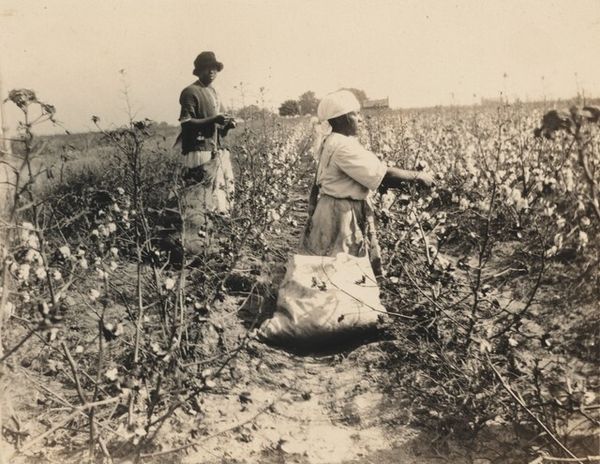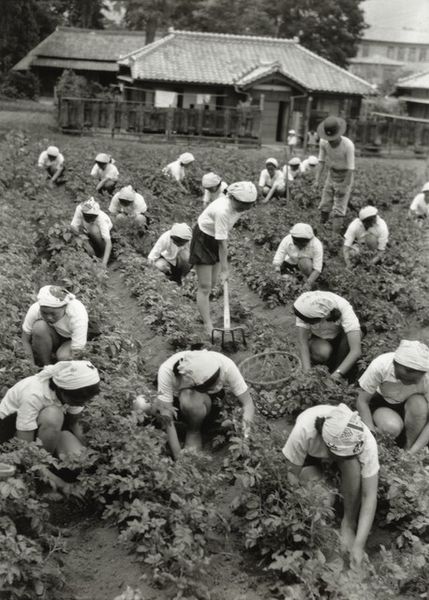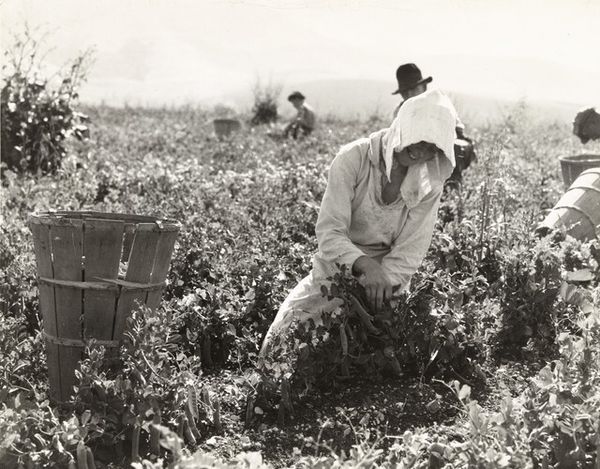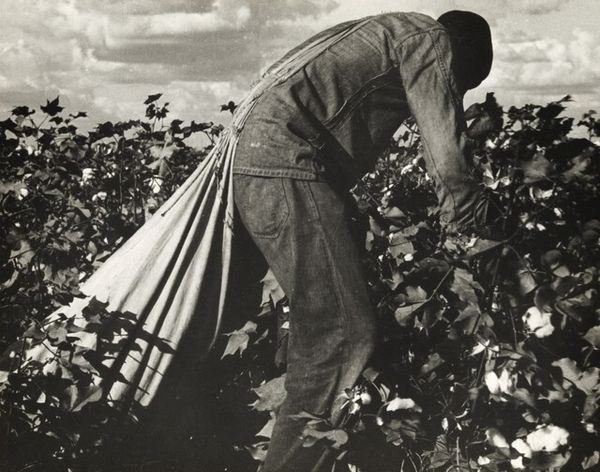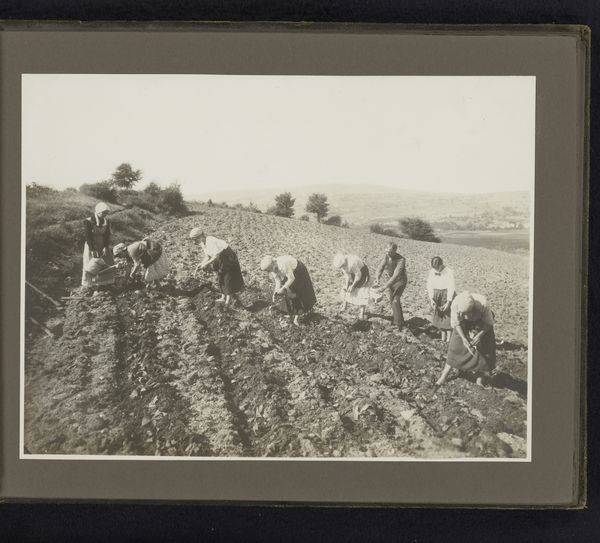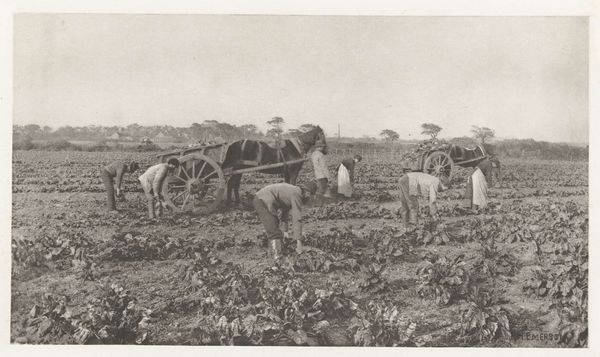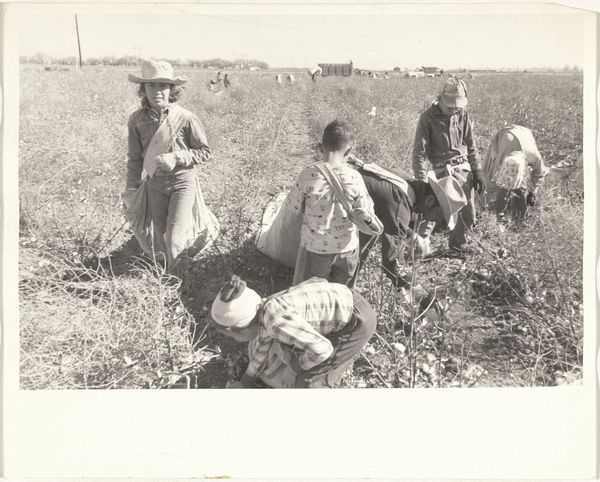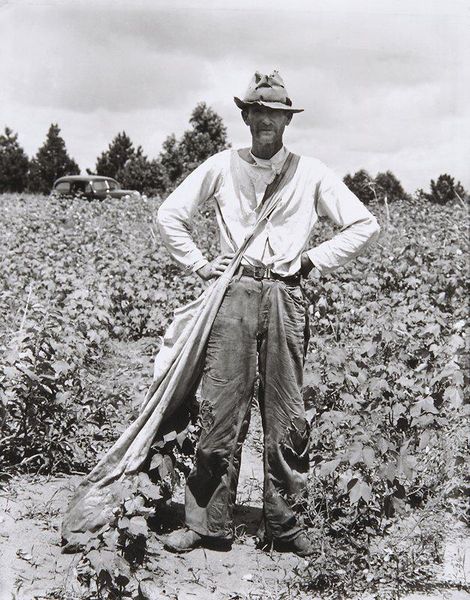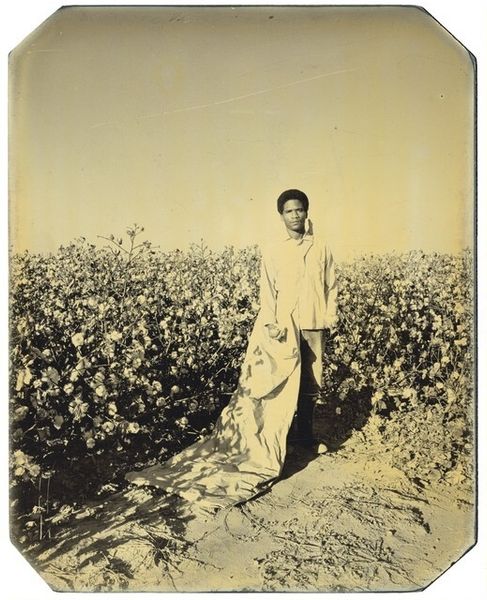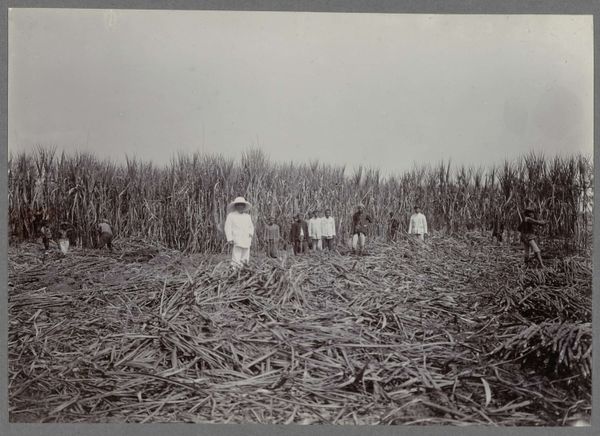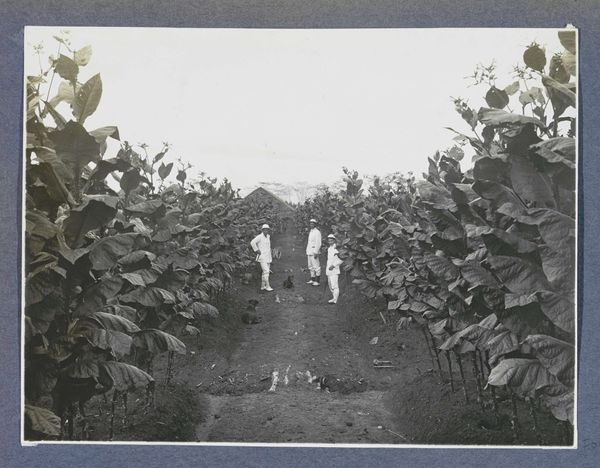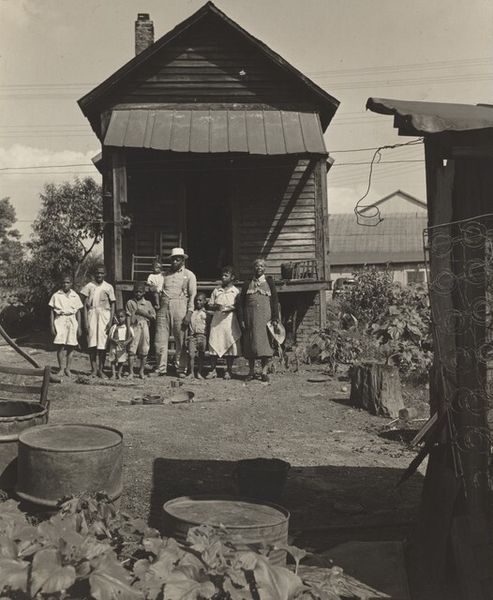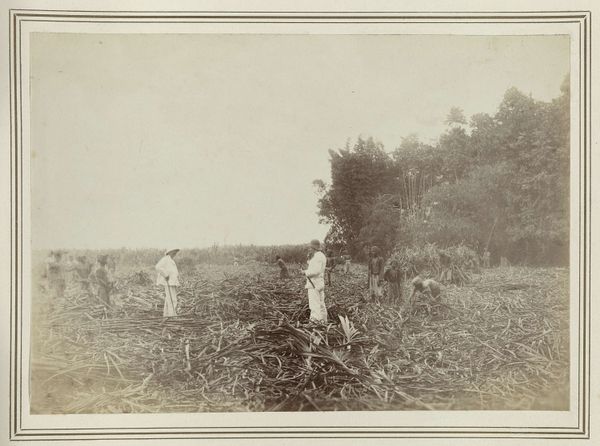
Dimensions: image/sheet: 34.2 × 44.7 cm (13 7/16 × 17 5/8 in.)
Copyright: National Gallery of Art: CC0 1.0
Editor: This photograph is titled "Yazoo Delta, Mississippi" by Dorothea Lange, possibly taken between 1938 and 1965. It's a black and white photograph and the scene has a very quiet and solemn mood. The tools that they have are striking. What draws your attention most about this image? Curator: Immediately, the interplay between labor and the land dominates my view. Consider the implements: the hoes, the bucket, their purpose is extracting profit from the soil. These aren’t just objects; they represent the relationship between the workers and the means of production. Editor: That's interesting! I was so focused on the faces. Curator: But their clothing also is meaningful – aprons worn over long-sleeved shirts, practical, protective but they also speak to the reality of the social structure. The landscape itself, seemingly endless rows, underscores the scale of agricultural production at this time and the material resources required. And how might this photograph influence our understanding of, say, a sculpture made from found agricultural objects? Editor: That's true. I hadn’t considered the connection to materiality in that way. The landscape is certainly overwhelming in the photograph. Curator: Exactly. The photographic medium itself – a gelatin-silver print – contributes to this understanding, highlighting its role as a document, but also a commodity circulated within a particular cultural context. Editor: I see what you mean. Thinking about the photograph as an object involved in a cycle of production and consumption makes the image itself speak to the social relations of the time. Thanks for helping me see this from that perspective! Curator: Of course. It's precisely in the making, distribution, and reception of these objects, be they photographs or farm tools, where art's meaning resides.
Comments
No comments
Be the first to comment and join the conversation on the ultimate creative platform.
